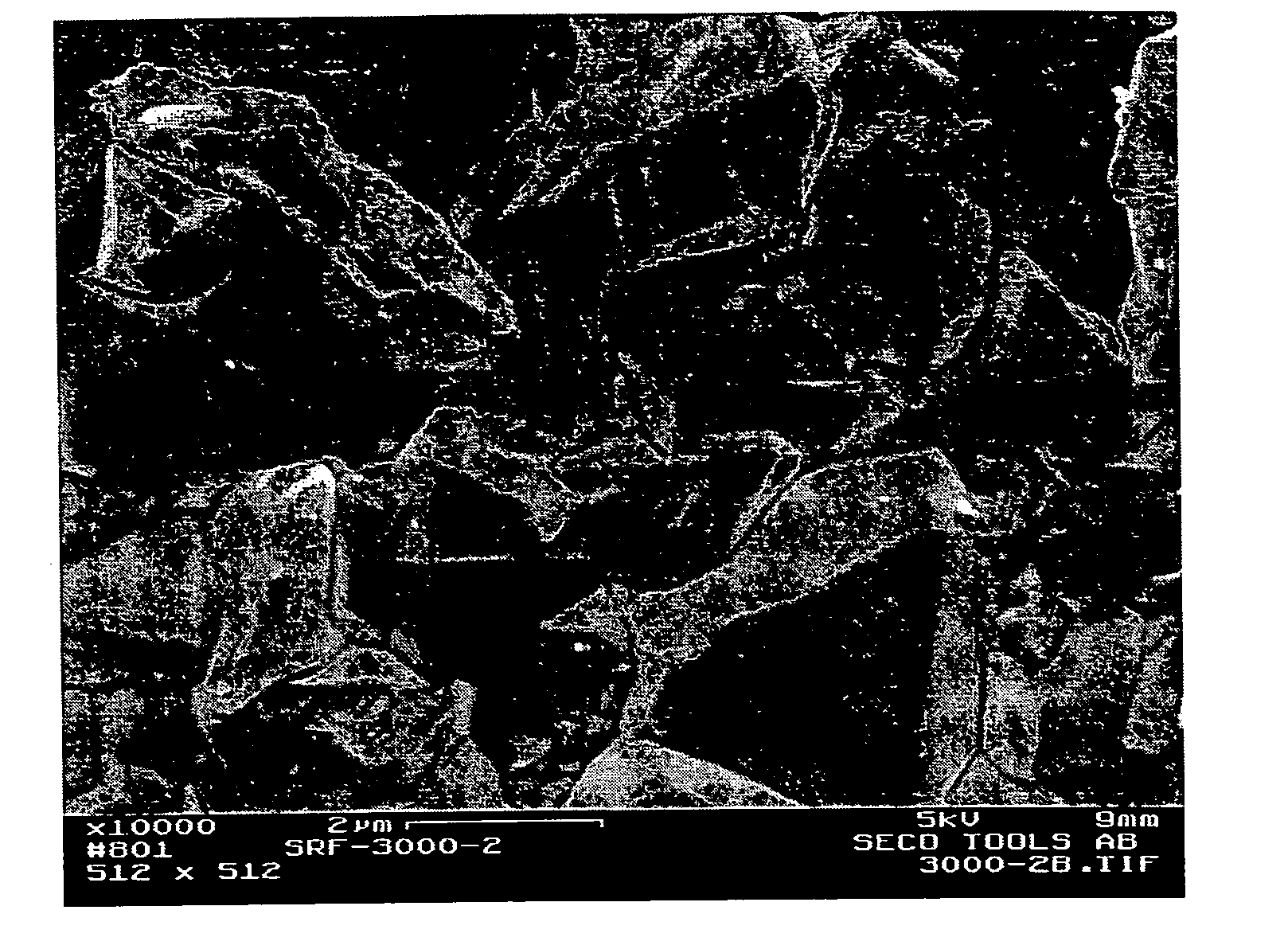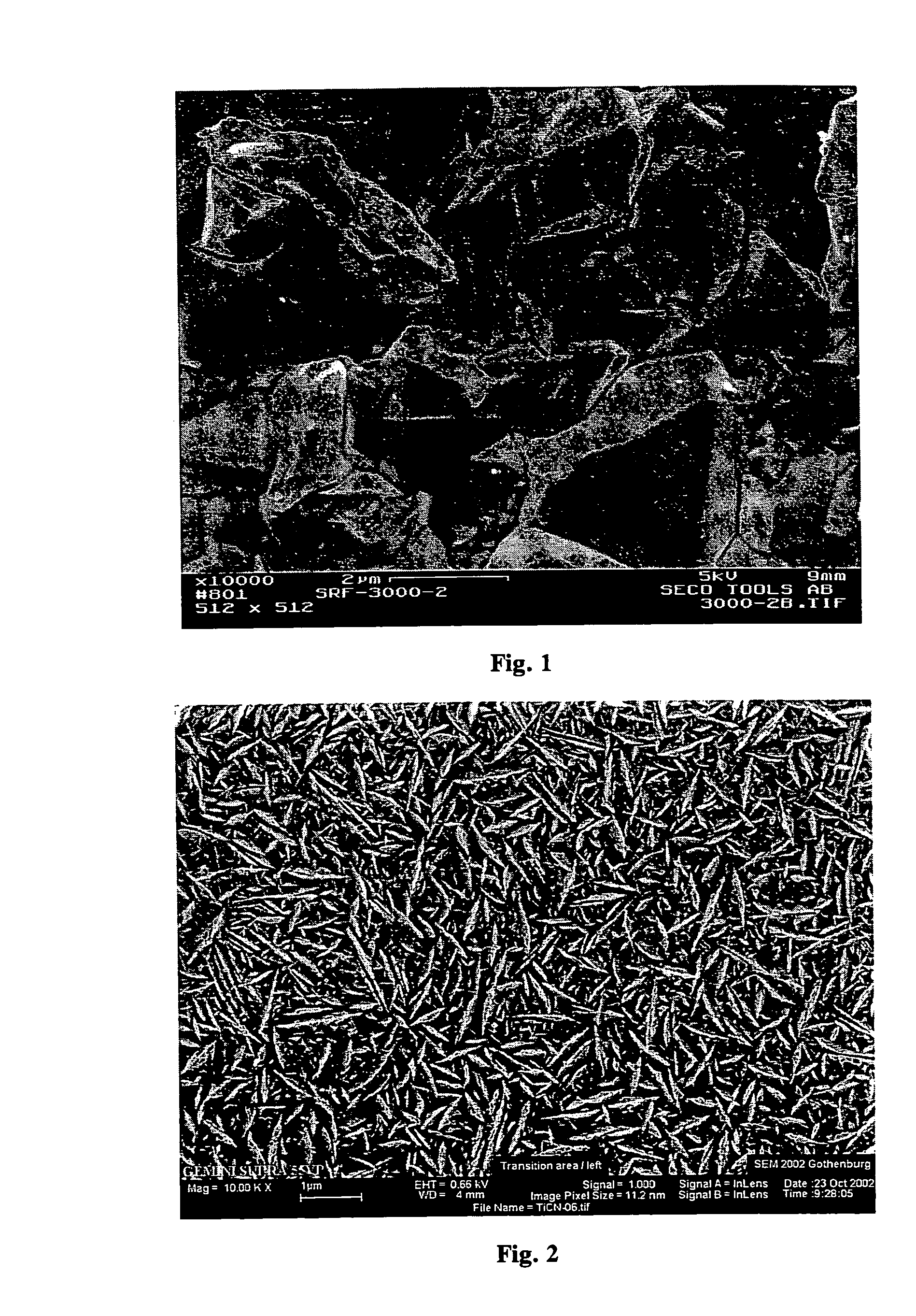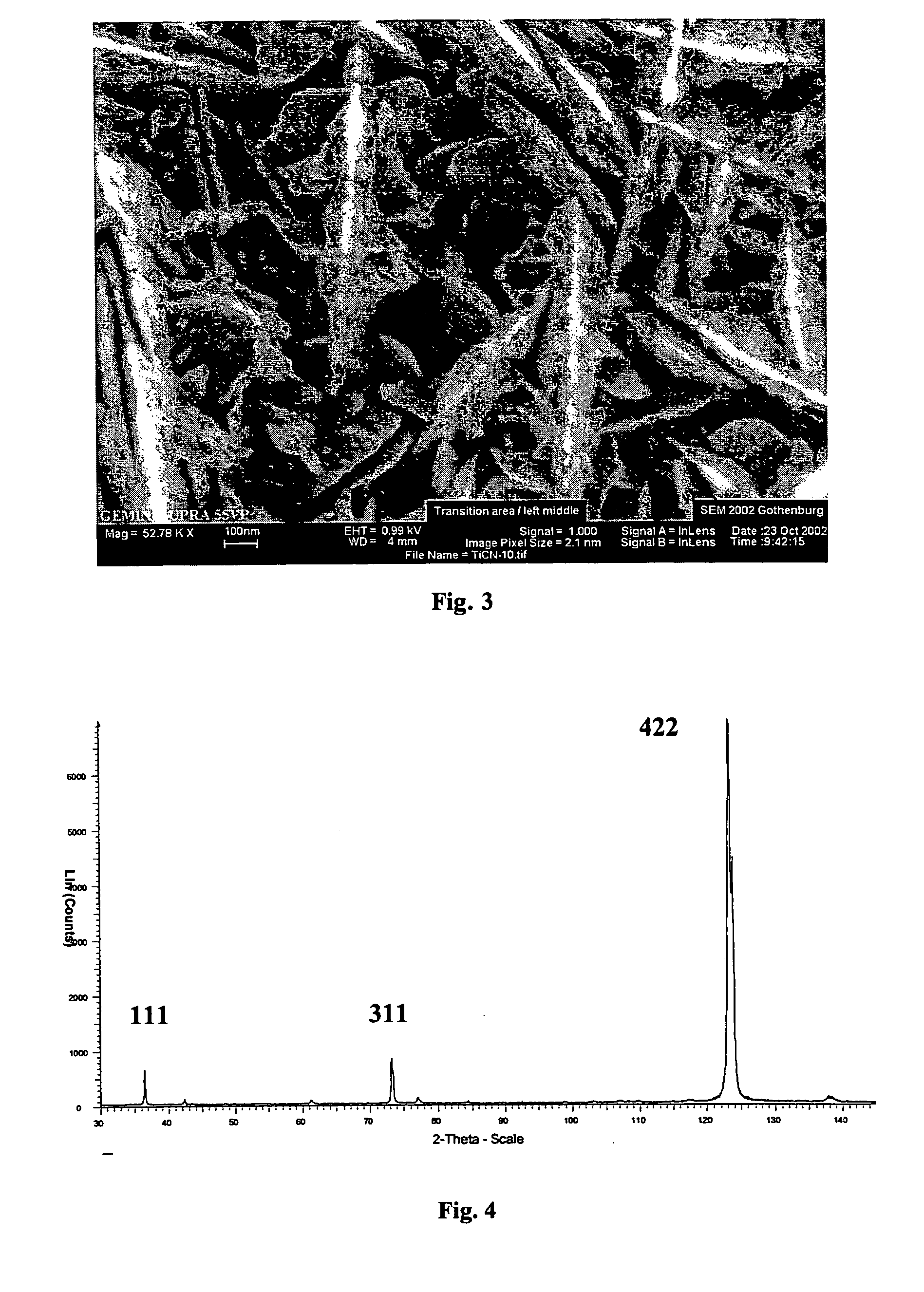Layer with controlled grain size and morphology for enhanced wear resistance
a technology of grain size and morphology, applied in the field of cutting tool inserts, can solve the problems of increasing toughness of coatings, difficult to modify by conventional process adjustments, and difficult to meet the requirements of hard and brittle materials with limited plasticity, so as to achieve the effect of enhancing performance and wear resistan
- Summary
- Abstract
- Description
- Claims
- Application Information
AI Technical Summary
Benefits of technology
Problems solved by technology
Method used
Image
Examples
example 1
In this case only CO and ZrCl4 were applied to obtain columnar structures with controlled, reduced, gain size. The following five experimental coatings (referred to as coatings 1, 2, 3, 4 and 5) were produced at a pressure of 70 mbar and at a temperature of 880° C according to the process data given in Table 2. Compared with the U.S. Pat. No. 6,472,060, considerably lower amounts of doping were used except coating 5, which was produced according to prior art U.S. Pat. No. 6,472,060. In order to achieve fine-grained columnar structure, a maximum amount of CO should be less than 1%, preferably from about 0.1 to about 0.8%. In this example, 0.8% of CO was used (Coating 2). Coating 3 was deposited at CO doping level of 2.5% to obtain equiaxed grain morphology. Coating 4 was deposited using ZrCl4 doping to obtain columnar morphology. Coating 5 was deposited using 8% CO according to U.S. Pat. No. 6,472,060 to obtain a nanograined layer. Coating 1 was deposited according to prior art with...
example 2
The coatings from Example 1 were investigated using Transmission electron microscopy (TEM) and Scanning electron microscopy (SEM) in order to elucidate the effect of CO and ZrCl4 doping on the grain size and morphology. It appeared clear even in SEM that the microstructure of the typical MTCVD Ti(C,N) coating being composed of large columnar crystals (FIG. 1) can be refined by CO doping. The obtained layer was composed of needle like crystals as shown in FIG. 2 at a CO doping level of 0.8%. Similar surface morphologies could be obtained either by ZrCl4 or HfCl4 doping alone or together with CO. The equiaxed grain morphology was obtained at CO doping level of 2.5%. TEM revealed that at this CO level the grain size was not brought into the nanograined region and was about 60 nm. Coating 4, which was deposited using ZrCl4 doping was composed of columnar grains with slightly smaller needle-like grains than Coating 2. The grain size of Coating 5 was in the nanograined region. The result...
example 3
The following five experimental coatings (referred to as coatings 6, 7, 8, 9 and 10) were produced at a pressure of 70 mbar and at a temperature of 880° C. according to the process data given in Table 4. The coating thickness was 8 μm for all coatings. CO2 was not used in this particular example but could be applied with extreme care because coatings can in the presence of this precursor easily be brought into the nanograined region with equiaxed grain size.
The coatings were studied by using TEM together with EDS / WDS. The results are presented in Table 5. Surface morphology of Coating 9 is shown in FIG. 3.
TABLE 4H2N2CH3CNTiCl4ZrCl4(1 / min)(1 / min)(1 / min)(l / min)(%)AlCl3(%)CO2(%)CO(%)Coating 6balance45.50.552.10.10.00.00.0Coating 7balance45.50.552.10.30.00.00.0Coating 8balance45.50.552.10.30.00.00.5Coating 9balance45.50.552.10.51.50.00.0Coating 10balance45.50.552.10.51.50.00.5
TABLE 5Grain size*)MorphologyAnalysisCoating 670 × 650 nmNeedle-likeTraces of ZrCoating 755 × 750 nmNeedle-...
PUM
| Property | Measurement | Unit |
|---|---|---|
| grain width | aaaaa | aaaaa |
| thickness | aaaaa | aaaaa |
| thickness | aaaaa | aaaaa |
Abstract
Description
Claims
Application Information
 Login to View More
Login to View More - R&D
- Intellectual Property
- Life Sciences
- Materials
- Tech Scout
- Unparalleled Data Quality
- Higher Quality Content
- 60% Fewer Hallucinations
Browse by: Latest US Patents, China's latest patents, Technical Efficacy Thesaurus, Application Domain, Technology Topic, Popular Technical Reports.
© 2025 PatSnap. All rights reserved.Legal|Privacy policy|Modern Slavery Act Transparency Statement|Sitemap|About US| Contact US: help@patsnap.com



